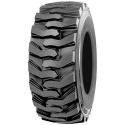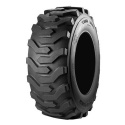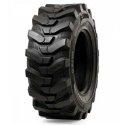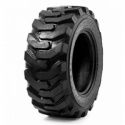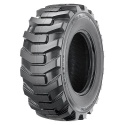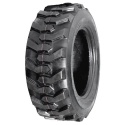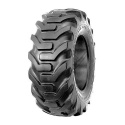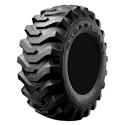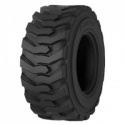Skidsteer Tyres






Skidsteer machines and Bobcats have grown significantly in popularity, not just for use on building and construction sites, but also around the farm. Skidsteer tyres are used on a wide variety of construction and agro-industrial machines from small skidsteer loader and Bobcats, through to telehandlers (telescopic handlers and loaders). Terrain Tyres have put together a selection of competitively priced and high quality skidsteer tyres. With brands such as BKT, GRI, Alliance, Camso and Mitas on offer we have a great selection suitable for many different applications. Ply ratings from 6ply to 14 ply are available and patterns range from closed block type right through to chevron skidsteers. Whether your machine is working in a concrete yard or in mud, we have the skidsteer tyres you need.
Finding the correct tyre for your skidsteer Machinery involves knowing the correct tyre size. The size is usually written on the sidewall of the tyre and can be displayed in a number of different ways. We have detailed an explanation of how the different methods of measuring the tyre can be written below:
Two Number Imperial Tyre Sizes - e.g. "10 - 16.5"
This measures the size of the tyres in inches. The first number denotes the overall width of the tyre which in the example above is 10". The last number is the diameter of the rim (wheel) in inches. In this example it would be 16.5"
Three Number Imperial Tyre Sizes - e.g. "12.5 / 80 - 18"
This measures the size of the tyres in inches. The first number denotes the overall width of the tyre which in the example above is 12.5". The middle number is the sidewall height of the tyre as a percentage of the width which is approximately 10" in the example above (80% of 12.5"). The last number is the diameter of the rim (wheel) in inches. In this example it would be 18"
Metric Tyre Sizes - e.g. "270 / 65 - 16.5"
This is the newer, 'metric' measurement where the first number is again the width of the tyre, but is measured in mm. In this case 270mm. The second digit represents the tyre sidewall profile (height) as a percentage of the width. In this example the sidewall height would be 65% of 270mm (approx. 175mm). The last digit is again the diameter of the rim (wheel), still measured in inches. In this example it would be 16.5"
Low Sidewall Profile Tyre Sizes - e.g. "17.5L - 24"
Some sizes of tyres feature an "L". This shows that the tyre features a lower profile or sidewall height. in the case above a 17.5L - 24 size would be significantly less tall than the standard 17.5 - 24 size.
There is more to choosing an skid steer tyre than just the size required. Skidsteer and Bobcat tyres are made and tested to work under certain criteria and limitations and the tyre load /speed and ply ratings all help choose the correct tyre for the application. The load speed index (service Index) is usually clearly marked on at least one of the sidewalls of the tyres.
Load Index is the limit of weight that the tyre can safely carry. Manufacturers make and test the tyres to operate under a certain weight. Once the tyre has passed these tests, it is awarded a load rating. It is essential that the correct load rating is used for skidsteer machinery tyres. Skidsteer machines and Telehandlers, all are designed to carry specific weights and fitting a tyre that doesn't meet these requirements can lead to premature wear, tyre damage or failure. This in turn reduces productivity and ends up costing more in the long term. Load indices are usually denoted by a number. The number itself is not the actual weight carried but represents the maximum weight that the tyre has been designed and tested for. Most tyres have a load index between 0 (45kg's) and 170 (6000kg's). For more information on skidsteer tyre load indexes, please refer to our load index chart on the Tyre Guide page.
Ply Ratings can be quite confusing in modern times and used to be the standard way to represent the overall strength of the tyre. Ply rating used to show how many plies of rubber that were used to make up the construction of the tyre. For example, if a tyre had a 10ply rating, it would be made up of 10 plies (layers) of rubber. Modern advances in tyre technology have lead to other materials than rubber being used and construction methods increasing the strength of the tyre. The PLY rating is less commonly used to convey the number of plies and is now more relevant in showing the strength of the tyre 'AS IF' it had that number of plies of rubber. Skidsteer tyre ply ratings are still useful when used as a guide in assessing the overall strength of the tyre.



